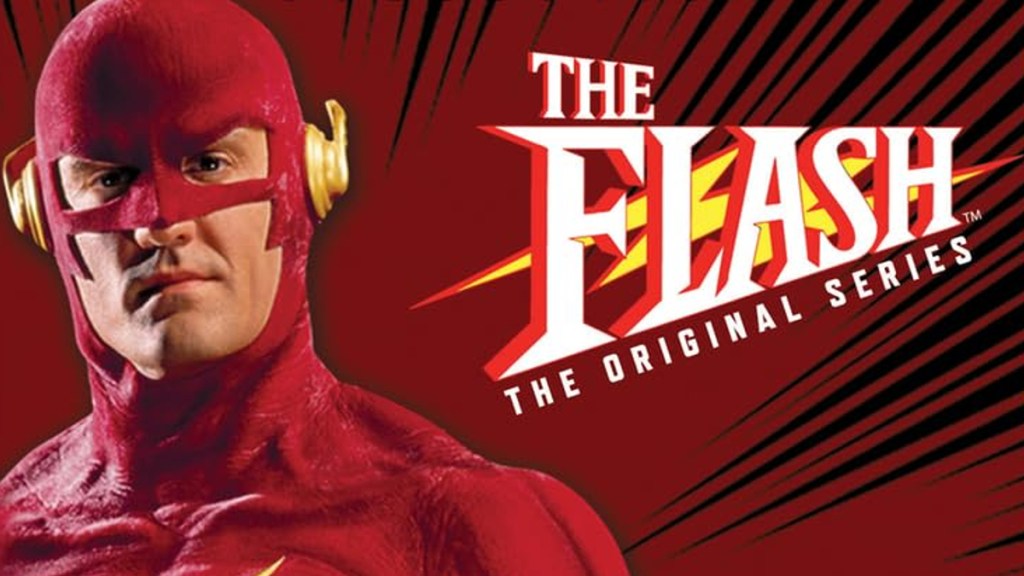Rather than ushering in a whole new wave of DC and Marvel Comics movies, Tim Burton‘s 1989 Batman mostly inspired studio heads to adapt other characters from the 1930s, like Dick Tracy, The Shadow, and The Phantom. Batman’s success did lead to one fairly direct successor, however: 1990’s The Flash TV show. With a muscle suit inspired by Michael Keaton’s Bat-costume, a Danny Elfman theme that was basically just his Bat-theme in another key, and matte paintings combined with surreally lit studio backdrops for the fictional Central City, it was a show clearly designed to say, “Hey, here’s everything you like about Batman, but with another DC hero!” The Rocketeer’s Dave Stevens designed the costume, and acclaimed artist-writer Howard Chaykin served as executive script consultant.
And then the network put it in a time slot opposite The Cosby Show and The Simpsons.
Because the pre-streaming era did long seasons, The Flash ran for 22 episodes before cancellation, but with CBS playing timeslot musical chairs with it towards the end, few fans at the time caught the entire season. Now they can, in higher-definition than was possible in 1990, as the Warner Archive Collection just put the entire season on a six-disc, on-demand set. It’s just the episodes and no extras, which feels like a major missed opportunity. Thanks to the nine-year run of the CW series and even the controversial Ezra Miller movie (which brought the Michael Keaton Batman inspiration full circle), is not the Flash a DC A-lister now?
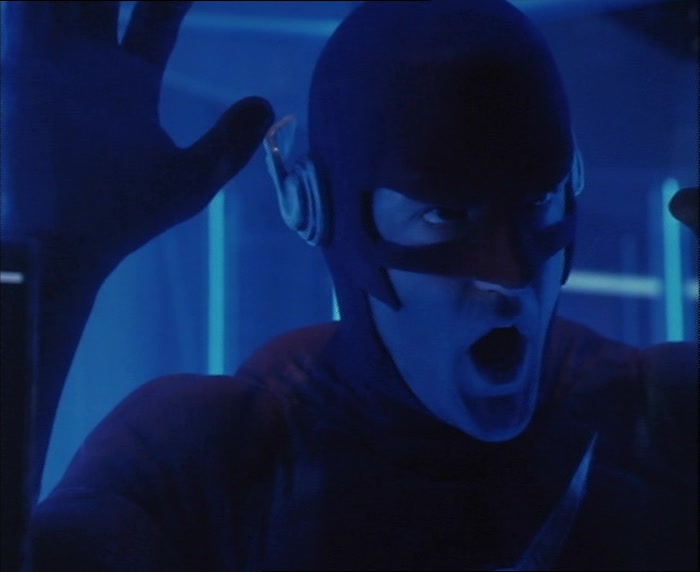
Righting the Shipp
Consider also that 1990’s Flash, John Wesley Shipp, has subsequently appeared in three roles in the CW Flash, one of which was literally the 1990 Flash, now canonized as being from Earth-90. So the entire series is canon to DC’s modern multiverse, even though Superman (1978) and Batman (1989) are just movies in this Flash’s universe. (He walks past a marquee showing them as a double feature.) As to other heroes, the show leaves it vague — Carter Hall is mentioned by name, but other names are mostly used as Easter eggs, and Star Labs weirdly has all of one employee. That’d be Tina McGee (Max Headroom’s Amanda Pays), whose mostly platonic relationship with Barry Allen would probably have leaned into more sexual tension had the show lasted.
Probably coincidentally, given the timing, The Flash also did the Dick Tracy thing of using comic-book colors. Not exclusively the way Warren Beatty’s film did, but nearly every fill light in the series is magenta, cyan, or yellow, the three colors that, along with black, make up the four-color printing process for newsprint comics. Combined with obvious backlot shots — anyone who’s ever been on the Warner Bros. lot will recognize it instantly — the effect is to make the surroundings look surreal rather than cheap. The show’s also fond of placing giant murals around its fictional city, some of which serve as an ironic counterpoint to what’s being depicted.
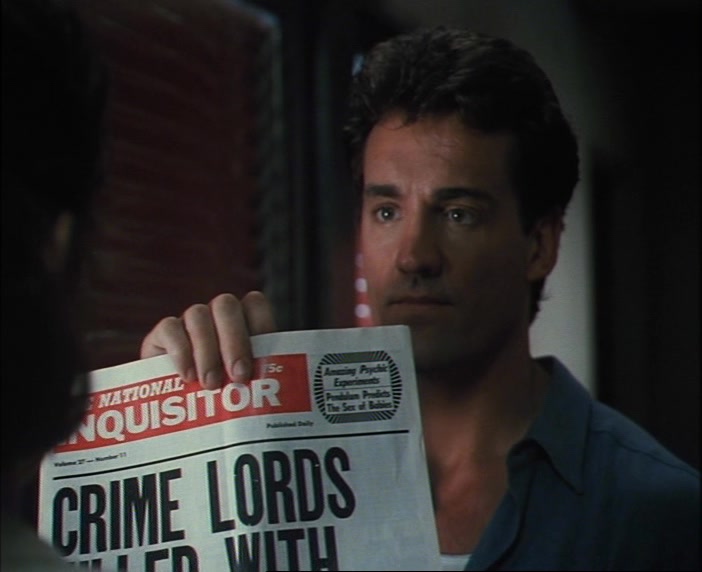
Keep It Simple, Speedster
Shipp could easily have been cast as a reaction to Michael Keaton’s initial Batman haters — he’s exactly the square-jawed, muscular leading man type that looks the part of a superhero even before he dons the padded suit. He came from soap operas, and probably would never beat Michael Keaton out for any acting awards, but he’s fine for the role, if not entirely convincing as a nerdy forensic scientist. Pays, as she previously did with the equally square-jawed Matt Frewer, brings out the best in him. Alex Desert, who went on to have a successful sitcom and voice-over career, fills out the trio of regular cast members as Barry’s best friend at work. Because it was the ’90s, he has dreads and wears super-colorful shirts to his police lab job.
Although some supporting characters recur, the episodes are mostly and refreshingly self-contained in a way modern superhero shows seem incapable of. Each week, a new villain comes to town, finds a way to challenge the Flash’s powers, and the Flash ultimately beats them. This Barry is very much mortal, rarely demonstrating powers other than fast running, and he can be tripped or made to slip, though he heals quickly. Some villains go the psychological route, though — if they can’t use fantastical weapons or their own odd abilities, they’ll go after Barry’s friends and family instead or blackmail him about his identity.
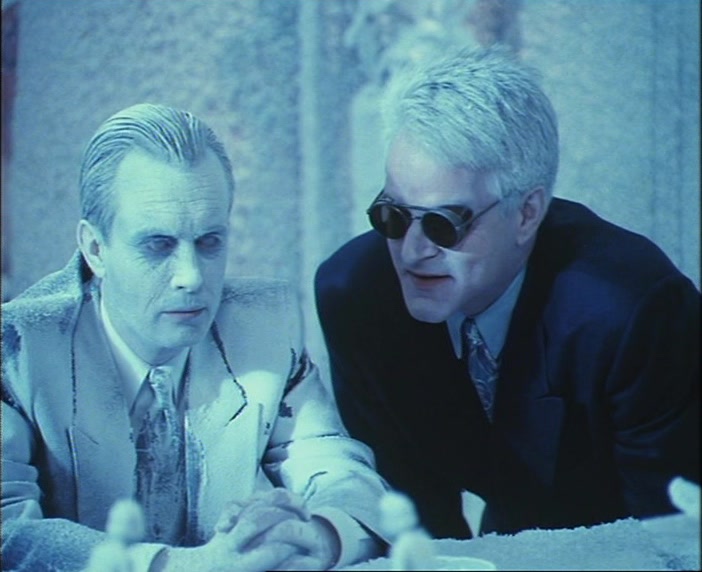
Paint It Black
The ’90s being the ’90s, almost every costume has to be functional rather than comic-faithful. Even the Flash’s red outfit is “explained” by the fact that it’s an experimental Soviet diving suit. A lot of villains wear black leather — and in one hilarious case, a “virtual reality” Nintendo Power Glove painted black. Even Captain Cold has a reason for his special glasses (he’s an albino with sensitive eyes) and poofy white hair that only suggests the hooded parka from the comics. The one exception is the Trickster, played by Mark Hamill, who goes full Batman 1966 wacky, while being tangibly dangerous with weapons in hand. Hamill appears in two episodes, and while he’s a little shaky in the first one, the second, in retrospect, is clearly a dry run for the Joker, especially when playing off a Harley-like sidekick/superfan named Prank (Corinne Bohrer).
Warners did a new HD scan for the set, bringing it up to modern standards with a level of clarity never seen before. [Note: the images in this review are courtesy of fancaps.net, based on the previous SD DVDs.] Mostly, anyway — because the special effects were mastered to broadcast standards of the day, they can’t just be upgraded with a new scan. So every time the picture suddenly gets extra-grainy, you know an effect is about to happen. Given that limitation, the special effects which were state-of-the-art at the time still hold up pretty well. Exceptions include scenes of pixel-vision that simply don’t look “futuristic” any more; back then we were all guessing, a lot, about what virtual reality would be like.
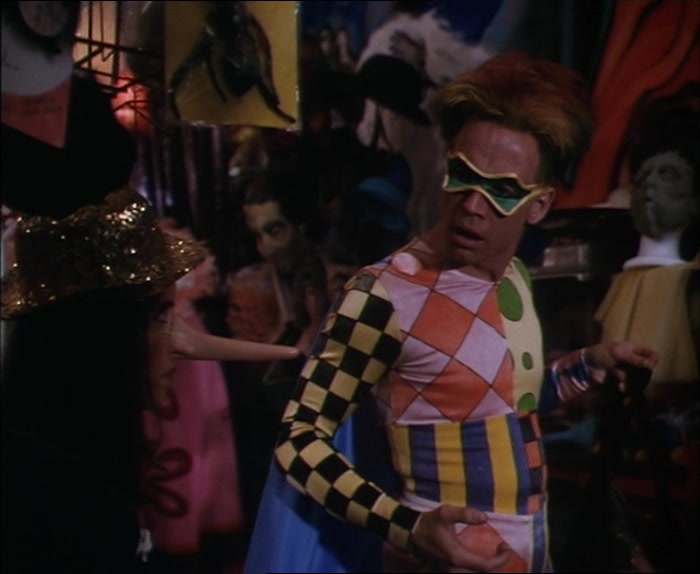
Clothes Make the Man?
One issue with a clearer picture is that we see the Flash suit gradually deteriorate. Like a lot of sci-fi shows, it front-loaded the budget, though the costume was also altered to make Shipp more comfortable. Initially, it looks like sculpted latex with airbrushed highlights to make it really pop; by the end, it looks like soft felt over balloons, with seams beginning to show. The former feels movie quality, and the latter is like a character meet and greet. That deep into the show, however, you’re already in for the long haul or not. If the characters haven’t won you over by the time the suit starts to show its age, it’s the least of your worries. And this is a fun show. Literally, it’s just made to be fun and is.
Guest stars included the likes of David Cassidy as a hologram-using Mirror Master and M. Emmett Walsh as Henry Allen, while many then-up-and-comers in small parts include Wes Studi, Clifton Collins Jr., Mark Dacascos, and Jonathan Brandis. Star Trek fans will notice Denise Crosby and Jeri Ryan in the same episode and Jeffrey Combs adopting an uncharacteristic Noo Yawk mobster accent as Captain Cold’s top client. None other than Richard Belzer had a recurring role as a Jerry Springer-style local TV host.
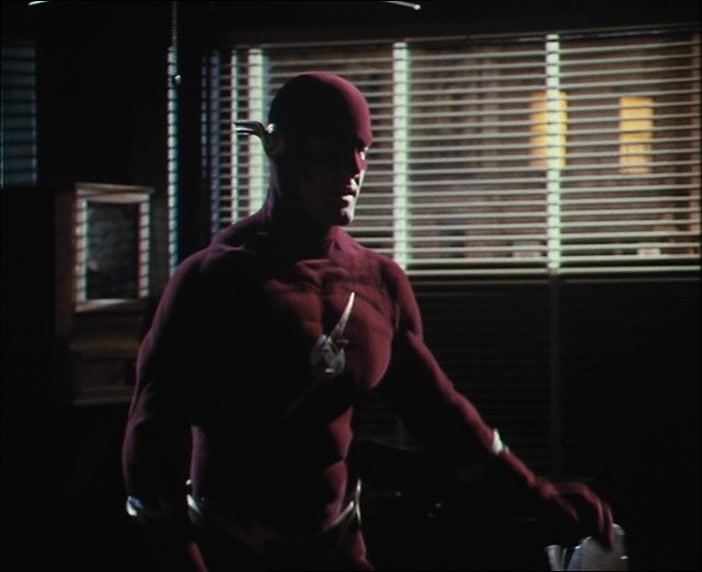
No More?
The Flash may not measure up to today’s prestige TV or even some modern network shows, but it’s easily digestible, effectively done, and set the stage for so much that came later. For a program now over 30 years old, it’s also surprisingly non-cringey in terms of stereotyping, though the one evil drug pusher hippie villain is way over the top, and the pilot episode’s biker gang made up of metalhead stereotypes is absurd. The casting is diverse for both the heroes and villains, with plenty of strong female characters. (Not among them is this show’s version of Iris West, swiftly written out so that Barry can be more available to female guest stars.)
It’s too bad there couldn’t be more extras on the set. Why not add the episodes of the CW’s Crisis on Infinite Earths in which the 1990 Flash appears? Shipp always seems happy to talk about The Flash, but not even a featurette? Even if Mark Hamill didn’t return any calls, which is hard to imagine, a compare-contrast featurette showing animated Joker scenes next to Trickster equivalents shouldn’t be difficult to throw together. In the end, a good quality copy of the show itself is what matters most, but it’s mystifying that Warner Bros. doesn’t seem to think it worth making a bigger production of. The show, initially acclaimed, may have ended with a thud, but people remember. Shipp wouldn’t have gotten the chance to return if there wasn’t residual fondness for what he and the team did here.
Check it out for yourself. The Flash: The Original Series is now available to order at Amazon and other site.
Grade: 3/5
